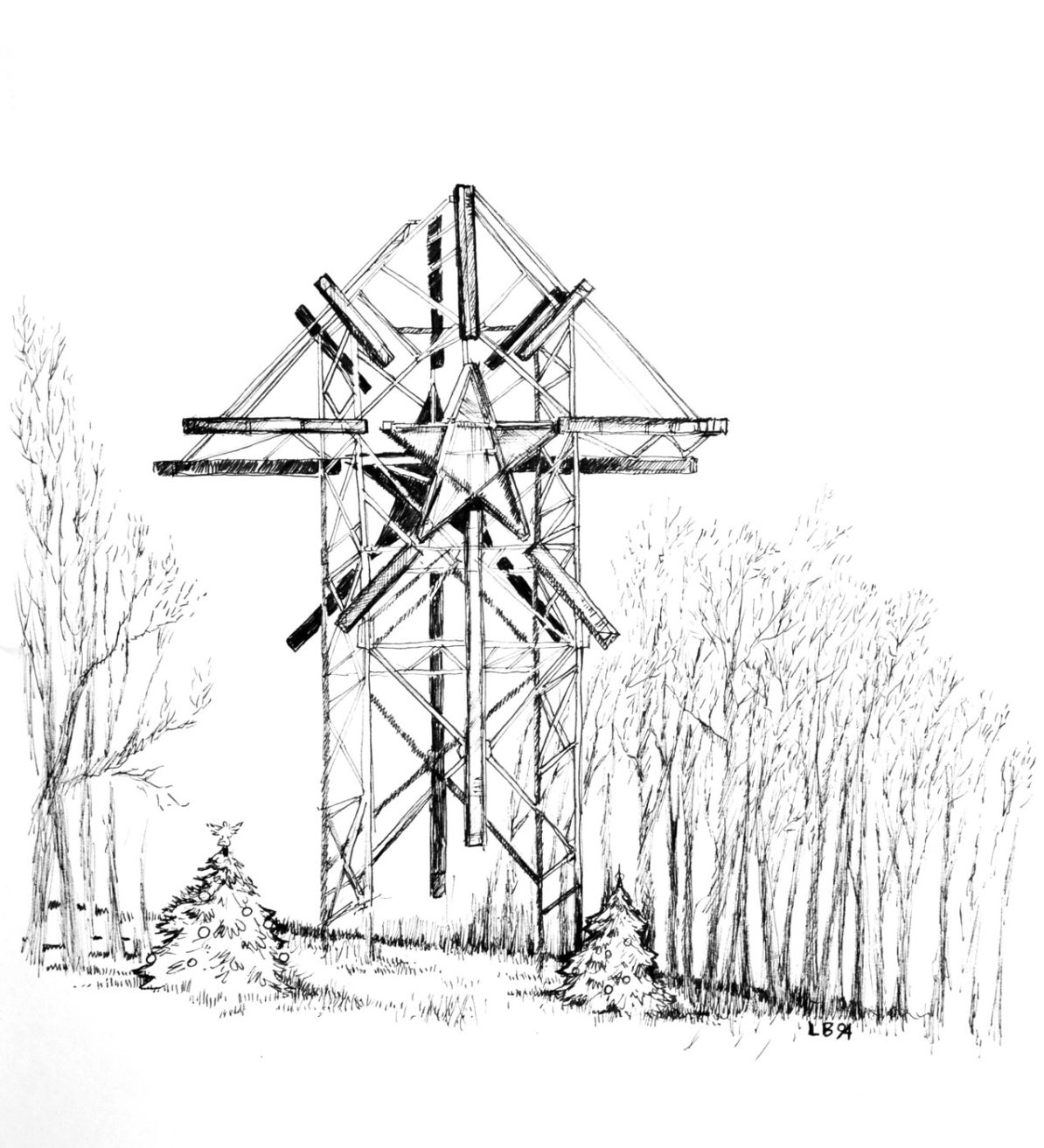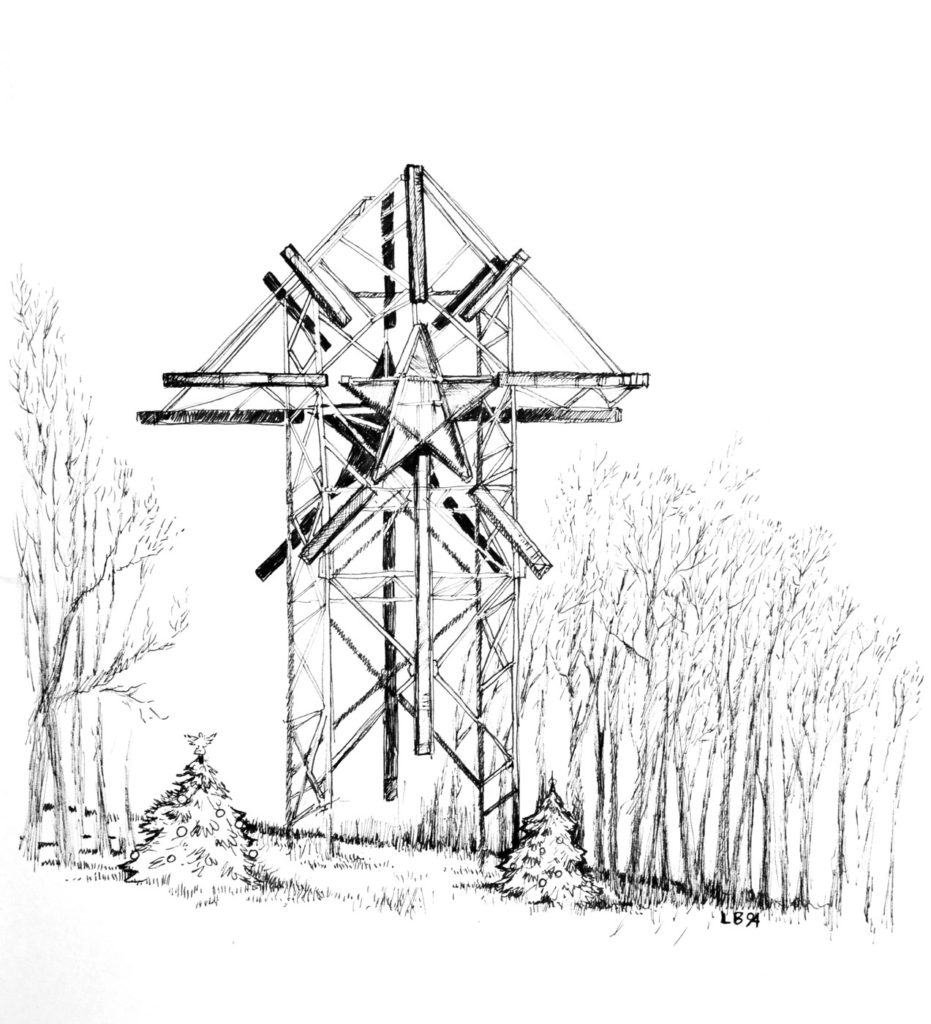

1994
Pen and Ink
8 inches x 8 inches
This is one of many I call the “Christmas drawings.” I used to do on-site early on Thanksgiving Day, and then go to my Mother’s house in Hellertown where the family would have Turkey dinner.
For years my daughter and I would go on this outing together. Without me even knowing what I would draw, the two of us would drive through Bethlehem and vicinity playing Christmas Carols until the inspiration hit me.
On this day, at the top of South Mountain, I came upon the road to the Bethlehem Star and walked past the chained off entrance, sketchbook in hand with Samantha at my heels. No warm car to sit in while Christmas Carols played this time. Samantha was a great sport and ran around the vicinity while I found part of the old original star foundation to seat myself and start drawing.
Eighty years ago, newspapers were king. The Bethlehem Globe-Times paid for the first star to go up on that site. I found out later that the star cost them $460 and consisted of two crisscrossed wooden “X”s overlapped to form an eight-pointed star sixty feet high and fifty feet wide. PP&L erected it lit with 150 bulbs. The Bethlehem Steel was run by Eugene Grace back then, and his wife Marion presided over the lighting ceremony by pulling a large switch that simultaneously lit the star and Bethlehem’s new Christmas Tree lights. The Bach Choir sang. The Bethlehem Chamber of Commerce decided henceforth Bethlehem would be known as “Christmas City, USA.”
That was December of 1937 at the very height of the Great Depression.
Two years later in 1939, Bethlehem Steel forged the framework to replace the wooden star. In 1967 it was again rebuilt to a height of ninety feet. In 1995 the star was ordered lit from 4:30 p.m. until midnight, every day of the year. The only time the Star has been dark was during World War II. From 1941 to 1945 no lights in Bethlehem were lit, Christmas or otherwise: the Federal Government had ordered a blackout for the “Steel,” which was in the midst of building a thousand ships and casting sixteen-inch cannons for the war effort. City officials said the lit star would make “too good of an air raid target.” On this site, my drawing of the Bethlehem Star was completed among the leftover cement block, wood and steel of its predecessors. Bethlehem’s solemn Icon, ready to blaze over the Valley with its three-hundred high-wattage lights, was a silent sentinel during the hours of my daylight visit.
